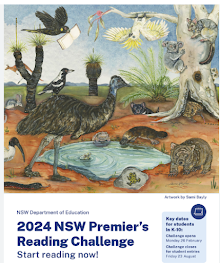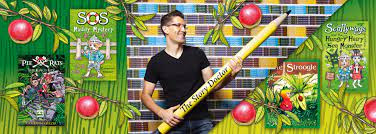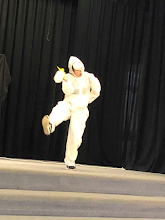During the
2018 stocktake a number of changes were made in the library to make it a more
comfortable and engaging learning environment. The students are enjoying the new
spacious, stimulating library layout.
This year we
have three teachers taking library lessons. I will be working in the library on
Monday Tuesday and Wednesday. Mrs Sullivan will be here on Wednesday and
Thursday and Mrs Demetriou will work in the library on Fridays.
The library
will be open before school on Monday, Tuesday, Wednesday and Friday mornings
and at lunch time on Monday, Tuesday and Thursday.
Premier’s
Reading Challenge
The Premier’s
reading challenge will open on March 4th and will need to be
finalised by August 30th. A number of students have already
expressed an interest in the challenge and have begun their reading journey.
The library
program will be as follows:
Kindergarten
The unit of
study will serve as an introduction to the library. The students will be
introduced to a range of ten different picture books by various authors and
illustrators. They will be exposed to the work of some exemplary authors. The
parts of a book will be examined in detail. The difference between fiction and
non-fiction will be explicitly taught. The students will understand the
components of the collection and where books are housed in the library. They
will understand the role of the author and illustrator and will share picture
books for enjoyment.
Year One
The students
will study ten picture books by a variety of authors and illustrators. The
books have been short listed in past years and are all examples of quality
literature. The students will use various visual literacy skills in order to
understand the manner in which pictures enhance and support the text.
Year Two
Nick Bland
is one of our foremost Australian authors for children. His books which are
loaded with engaging rhythm and rhyme and colourful illustrations provide a
sense of adventure and enjoyment for all readers. This term Year two will
undertake a study of ten books by Nick Bland. It is expected that, as the
students are exposed to such language features as rhyme, repetition
alliteration and personification supported by high quality illustrations they
will be entertained and inspired to write creatively.
Stage Two
For the
first half of term one a unit of work has been designed to support the Stage 2
geography studies. In the library the students will focus on Uluru. The
resources which will be accessed in Stile are aimed to help students acquire
the skills and develop the knowledge needed to become geographically aware and
active students. Themes of sustainability, Aboriginal peoples (Anangu), the
natural environment and the values of different people can be seen through the
links provided. Uluru is an iconic, world heritage site about which everyone
has an opinion. Ultimately the value in which people hold Uluru, in turn
impacts the rock itself, its surrounding environments and the traditional
custodians of the land.
In the
second half of the term the students will study a number of Aboriginal
dreamtime stories in order to understand the following:
Oral
Tradition: Stories passed on through telling and re-telling many times over a
long period.
Storytellers:
Very important people who pass on knowledge.
The
Storyteller's Job: Teachers, custodians and mentors to the next generation of
storytellers.
What The
Stories Are About: Traditional Dreaming stories and stories about what has
happened since European settlement.
Why They Are
Told: To teach the rules and laws of the indigenous people. They teach the
listeners how to behave, to treat each other with respect, to live in a
balanced way with nature and to understand the land and the creatures around
them.
Subjects of
The Stories: Plants and animals, natural features, sacred places, creation
stories, what happened to people when they disobeyed the law.
Stage Three
To Aboriginal
and Torres Strait Islander people the word deadly means successful, great, and
outstanding. Deadly Australians are people that we can all look up to. Through
research in the Aboriginal studies collection in our library and by viewing
video clips and exploring websites the stage three students will learn about
eight deadly Australians who have worked hard and achieved local and
international fame for their achievements. These people have made an incredible
impact on their communities, their country and the world. The following content
in the Stage 3 History document is addressed in this unit:
• Using a range of sources, research and
describe the contribution of Aboriginal and Torres Strait Islander peoples and
other groups to Australian society.
• The contribution of individuals and
groups, including Aboriginal people and/or Torres Strait Islanders and
migrants, to the development of Australian society, for example in areas such
as the economy, education, sciences, the arts, sport
• Examine Australian human rights, past
and present, affecting Aboriginal and/or Torres Strait Islander peoples,
migrants, women and children.





















































































































